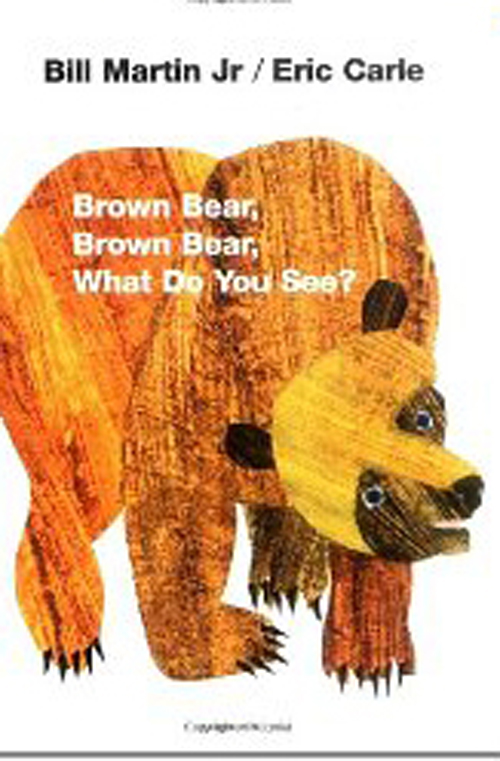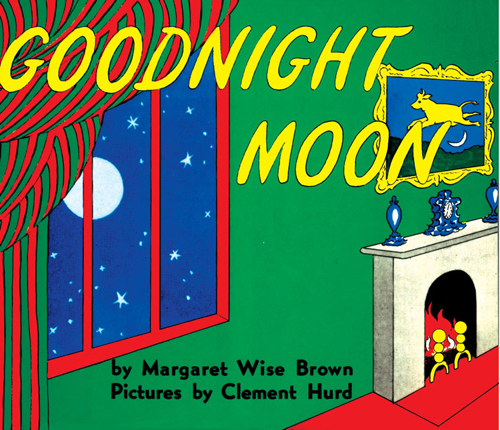The Crocodile in the Common Core Standards
“[A]s you grow up in this world you realize people really don’t give a shit about what you feel or what you think.” Thus, Common Core Standards architect David Coleman delivered [1] the core pedagogy of the Common Core State Standards (CCSS) to educators gathered at the New York State Department of Education in April 2011. Listen to a few more of Coleman’s proclamations and you have to ask yourself if this is a man of deep experience and rectitude or just a cuckoo bird let loose on a hapless bunch of educrats who don’t know how to voice dissent. Coleman was on stage one hour 59 minutes in Chancellor’s Hall decreeing the new reality of teaching in public schools across America. No one in the audience challenged his bizarre declarations.
Maybe they were in a state of shock.
 Brown Bear is still known to more people from ages one to one hundred than David Coleman or Arne Duncan.Or maybe the hall was silent because Coleman is billed as “a leading author and architect of the CCSS, and our professional organizations have already caved in on the Common Core — without a shot being fired. As premier standards entrepreneur, Coleman is a busy man, having already co-written the Common Core State Curriculum Standards and the Publishers’ Criteria for the Common Core State Standards in English Language Arts and Literacy [2]).
Brown Bear is still known to more people from ages one to one hundred than David Coleman or Arne Duncan.Or maybe the hall was silent because Coleman is billed as “a leading author and architect of the CCSS, and our professional organizations have already caved in on the Common Core — without a shot being fired. As premier standards entrepreneur, Coleman is a busy man, having already co-written the Common Core State Curriculum Standards and the Publishers’ Criteria for the Common Core State Standards in English Language Arts and Literacy [2]).
Coleman insists that teachers must train students to be workers in the Global Economy. In his words, “It is rare in a working environment that someone says, “Johnson, I need a market analysis by Friday but before that I need a compelling account of your childhood.” Translation to the classroom: No more primary grade essays about lost teeth or middle school essays about prepubescent angst. Instead, students must provide critical analysis of the “Allegory of the Cave” from Plato’s Republic, listed as an “exemplary informational text” in the Common Core State Standards for Language Arts.[3] If that’s judged as over the top for 12-year-olds, there’s always Ronald Reagan’s 1988 “Address to Students at Moscow State University.”
As though literacy is to prepare children only for a working environment. And as though personal opinion isn’t vital in a working environment.
Coleman is on a mission to slash both the amount of personal narrative in writing and the amount of fiction in reading. This is based not on any experience teaching –except at the University of London–but because, he insists, readers gain “world knowledge” through nonfiction, which he calls “informational text.” Listening to Coleman evokes Kafka’s The Castle: “You have been in the village a few days and already think you know everything better than everyone here.” The difference is that Coleman provides no evidence that he’s been in the public school village even a few days.
 Standardisto David Coleman (above) doesn't give a shit about what children have long enjoyed about reading fiction and poetry, since he wants to make schools a Boot Camp for the global economy via the "Common Core Standards" he is helping the U.S. Department of Education push like crack cocaine across the USA. Ironically, schools like Sidwell Friends in Washington, D.C. (where the children of Barack Obama go to school) and the University of Chicago Lab School (where the children of former White House Chief of Staff and now Chicago's Mayor Rahm Emanuel go to school) reject straight jackets like the "Common Core" and promote the reading of children, young adult, and real literature.Skeptics who might doubt that replacing Brown Bear, Brown Bear with a Wikipedia entry on Ursus arctos will stave off our nation’s economic woes might wonder: Why, if fiction is no more vital than leftover turnips, is there a Nobel Prize in Literature and not in lawyers’ briefs or material from the Federal Reserve Bank of San Francisco’s Web site (listed as a Common Core exemplary text). For more on the prescribed informational text, the reader is advised to do what not more than fourscore in the country have done: Read Appendixes A and B of the Common Core State Curriculum Standards. Surely Appendix A will frost your toes (http://www.corestandards.org/assets/Appendix_A.pdf) and then Appendix B will freeze your heart.
Standardisto David Coleman (above) doesn't give a shit about what children have long enjoyed about reading fiction and poetry, since he wants to make schools a Boot Camp for the global economy via the "Common Core Standards" he is helping the U.S. Department of Education push like crack cocaine across the USA. Ironically, schools like Sidwell Friends in Washington, D.C. (where the children of Barack Obama go to school) and the University of Chicago Lab School (where the children of former White House Chief of Staff and now Chicago's Mayor Rahm Emanuel go to school) reject straight jackets like the "Common Core" and promote the reading of children, young adult, and real literature.Skeptics who might doubt that replacing Brown Bear, Brown Bear with a Wikipedia entry on Ursus arctos will stave off our nation’s economic woes might wonder: Why, if fiction is no more vital than leftover turnips, is there a Nobel Prize in Literature and not in lawyers’ briefs or material from the Federal Reserve Bank of San Francisco’s Web site (listed as a Common Core exemplary text). For more on the prescribed informational text, the reader is advised to do what not more than fourscore in the country have done: Read Appendixes A and B of the Common Core State Curriculum Standards. Surely Appendix A will frost your toes (http://www.corestandards.org/assets/Appendix_A.pdf) and then Appendix B will freeze your heart.
David Coleman and his Common Core Standards cohorts decree that once teens get through Ovid’s Metamorphoses, they can move on to an article from Scientific American about the Higgs boson. (English/Language Arts Literacy Examples ELA-1 and ELA–2: Focused Literacy, Extended Constructed Response Type, p. 684 (http://www.corestandards.org/assets/Appendix_B.pdf)
Text That Informs
Here’s how Michael Dirda opens his new book [4] On Conan Doyle: Or, The Whole Art of Storytelling
Graham Greene famously observed that only in childhood do books have any deep influence on our lives
How many adults first learned about moral complexity from the final chapter of Beverly Cleary’s Henry Higgins,
when the dog Ribsy must choose between two equally kind masters?
Who, at any age, can read unmoved the last pages of Tarzan of the Apes when the rightful Lord Greystoke, deliberating sacrificing his own hope for happiness, quietly says, “My mother was an ape. . . I never knew who my father was.”
In her New York Times Magazine blog,[v] Ilene Silverman writes of her three favorite books as a teenager: The Chocolate War, Separate Peace, and My Darling My Hamburger. For the teen Silverman, these novels were filled with informational text, providing important information about the world.
 Boo Radley and Scout from the movie version of the novel "To Kill a Mockingbird." Millions of readers — and viewers — have been brought to tears by the words "Hey, Boo..." which will soon be banned by Common Core. The power of the lines can only be understood in the context of the power of the novel, but Common Core's David Coleman wants to ban imaginative literature in favor of a Power Point version of reality promoted by the likes of Bill Gates and Arne Duncan — for other peoples' children, while theirs get everything.Interviewed for the film Hey, Boo: Harper Lee and to Kill a Mockingbird, in which a range of people—from Roseanne Cash to Tom Brokow– talk about the important world knowledge gained from reading Harper Lee’s novel. Ph.D. Pulitzer Prize winner Richard Russo says, “Masterpieces tap into something essential to us—at the heart of who we are and how we love.” James Patterson says, “You’re suspecting something about Boo — which should tell you something about yourself.”
Boo Radley and Scout from the movie version of the novel "To Kill a Mockingbird." Millions of readers — and viewers — have been brought to tears by the words "Hey, Boo..." which will soon be banned by Common Core. The power of the lines can only be understood in the context of the power of the novel, but Common Core's David Coleman wants to ban imaginative literature in favor of a Power Point version of reality promoted by the likes of Bill Gates and Arne Duncan — for other peoples' children, while theirs get everything.Interviewed for the film Hey, Boo: Harper Lee and to Kill a Mockingbird, in which a range of people—from Roseanne Cash to Tom Brokow– talk about the important world knowledge gained from reading Harper Lee’s novel. Ph.D. Pulitzer Prize winner Richard Russo says, “Masterpieces tap into something essential to us—at the heart of who we are and how we love.” James Patterson says, “You’re suspecting something about Boo — which should tell you something about yourself.”
Of course David Coleman insists we’re supposed to convince students that nobody gives a shit about how they feel or their need to find out something about themselves.
Writing in The New Yorker, Louis Menand says[vi], “When I read a poem I relate it to all the other poems I have read. . . past poems condition my response to any new poem. And the really new poem conditions my response to all the poems that precede it. After “Prufrock,” the Inferno is, ever so slightly, a different poem. Thus text informs text backwards and forwards. Sarah Bakewell says the same thing in How To Live: A Life of Montaigne,[vii] insisting that readers approach Montaigne “from their private perspectives, contributing their own experience of life. . . a two-person encounter between writer and reader.”
 Michelle Obama reads "Brown Bear" to children. The Obama daughters attend Sidwell Friends, a private school in Washington D.C. that prides itself on a full curriculum, including children's literature, art and music. Common Core, promoted by Barack Obama's Education Department, would deprive most working class children in America's public schools of the same experience.In his introduction to Poet’s Choice[viii], MacArthur Fellowship winner and award-winning poet Edward Hirsch advises that biographical, literary, and historical info provides readers a context for their reading. The teacher decides which kind of information is most relevant for each work. The reader decides too.
Michelle Obama reads "Brown Bear" to children. The Obama daughters attend Sidwell Friends, a private school in Washington D.C. that prides itself on a full curriculum, including children's literature, art and music. Common Core, promoted by Barack Obama's Education Department, would deprive most working class children in America's public schools of the same experience.In his introduction to Poet’s Choice[viii], MacArthur Fellowship winner and award-winning poet Edward Hirsch advises that biographical, literary, and historical info provides readers a context for their reading. The teacher decides which kind of information is most relevant for each work. The reader decides too.
But in presenting his notion of a model lesson for teaching Martin Luther King Jr’s “Letter to a Birmingham Jail,” David Coleman snidely rejects out of hand such approaches as providing any biographical, cultural, or historical context for the letter — just as he rejects reader response theory which focuses on the reader as an active agent in the work’s meaning. Instead, Coleman champions what amounts to New Criticism on steroids, insisting that the reader’s sole focus must be only on the words in the text
Although a multitude of expert readers show that the emperor of the Common Core Standards is naked, as long as such professional organizations as the National Council of Teachers of English (NCTE) and the International Reading Association (IRA) remain silent, David Coleman seems safe in shouting his absurd declarations from the rooftops. Instead of offering any informed resistance, NCTE and IRA are occupied with figuring out how they can make money from embracing the Common Core — and staving off dissidents in their own ranks. Last year, NCTE resorted to technical excuses for squashing a proposed resolution against the Common Core.
 Bill Gates recently at Davos, where the one percent discuss how to rule the world.But the resolution proposers are back: See Resolution Sent to NCTE (http://susanohanian.org/show_yahoo.php?id=699).
Bill Gates recently at Davos, where the one percent discuss how to rule the world.But the resolution proposers are back: See Resolution Sent to NCTE (http://susanohanian.org/show_yahoo.php?id=699).
Money Talks, Money Legislates, Money Delivers Classroom Lessons
The Common Core State Standards exist because the Bill and Melinda Gates Foundation wanted them. To help their aide-de-camps, the president and the U. S. Secretary of Education, pretend that these are state and not national standards, the Bill and Melinda Gates Foundation sent buckets of money to the National Governors Association and Council of Chief State School Officers to act as sponsors. More tons of money to the National PTA to spread the good word and so on. As I revealed in an article in Extra![ix] very few media have pointed to the money source. Of course very few media even bother to mention anything about the Common Core.
I’d like to introduce David Coleman, Bill Gates, Arne Duncan — and all the rest of the Standardistos — to Chris, who found handwriting very difficult but insisted on laboriously copying out Beatrix Potter’s Tale of Squirrel Nutkin in his notebook. Every word. Dougie asked him, “Why are you doing this? Miz O gave us all our own copy of the book.” And Chris answered, “I know. I just like the way the words feel.” This from a boy who entered third grade loudly complaining about how much he hated both reading and writing. This is the boy who ended the year exchanging letters with his favorite poet, Jack Prelutsky. I’d like to introduce this motley school deform crew to Chris’ classmate Leslie, who contacted me 25 years later, to talk about the importance of Amelia Bedelia in her life.
This Common Core den of thieves who are stealing the literary rights of our students should read Arnold Lobel’s lovely little fable, “The Crocodile in the Bedroom.”[x] A crocodile who loved the neat and tidy rows of the flowers on the wallpaper in his bedroom was coaxed outside into the garden by his wife, who invited him to smell the roses and the lilies of the valley. The crocodile couldn’t stand the “terrible tangle” of freely growing flowers, and went to bed, preferring to stare at neat and tidy wallpaper. There, “he turned a very pale and sickly shade of green.”
With David Coleman as their spokesman out on the stump, the National Governors Association, the Council of Chief State School Officers, and the U. S. Department of Education, acting in concert with the Bill and Melinda Gates Foundation, prescribe a very pale, sickly shade of green future for our vibrant and deliciously messy classrooms. Certainly, Lobel’s moral, Without a doubt, there is such a thing as too much order, applies even more to the classroom than it does to wallpaper. And letting our corporate school reformers steamroll our schools into a neat and tidy standardized product puts our children in great peril.
 Will it soon change from "...goodnight comb and goodnight brush, and a quiet old lady whispering 'Hush'..." to The Department of Education orders you "Hush..." [1] David Coleman, “Bringing the Common Core to Life”, New York State Department of Education, April 28, 2011
Will it soon change from "...goodnight comb and goodnight brush, and a quiet old lady whispering 'Hush'..." to The Department of Education orders you "Hush..." [1] David Coleman, “Bringing the Common Core to Life”, New York State Department of Education, April 28, 2011
http://usny.nysed.gov/rttt/resources/bringing-the-common-core-to-life.html
[2] David Coleman and Susan Pimentel, “Publishers’ Criteria for the Common Core State Standards
in English Language Arts and Literacy, Grades K–2” http://www.edweek.org/media/k-2-criteria-blog.pdf
[3] National Governors Association and Council of Chief State School Officers, “Common Core State Standards,” http://corestandards.org/assets/CCSSI_ELA%20Standards.pdf
[4] Michael Dirda, On Conan Doyle: Or, The Whole Art of Storytelling, Princeton University Press, 2011
[v] Ilene Silverman, “The 6th Floor, New York Times Magazine blog, Sept. 21, 2011
[vi] Louis Menand, “A Critic at Large,” The New Yorker, Sept. 19, 2011, 81
[vii] Sarah Bakewell, How to Live: A Life of Montaigne, Other Press 2010, 9
[viii] Edward Hirsch, Poet’s Choice, Harcourt Inc. 2006
[ix] Susan Ohanian, “’Race to the Top’ and the Bill Gates Connection,“ Extra! September 2010 http://www.fair.org/index.php?page=4147
[x] Arnold Lobel, “Crocodile in the Bedroom,” Fables, HarperCollins 1980

